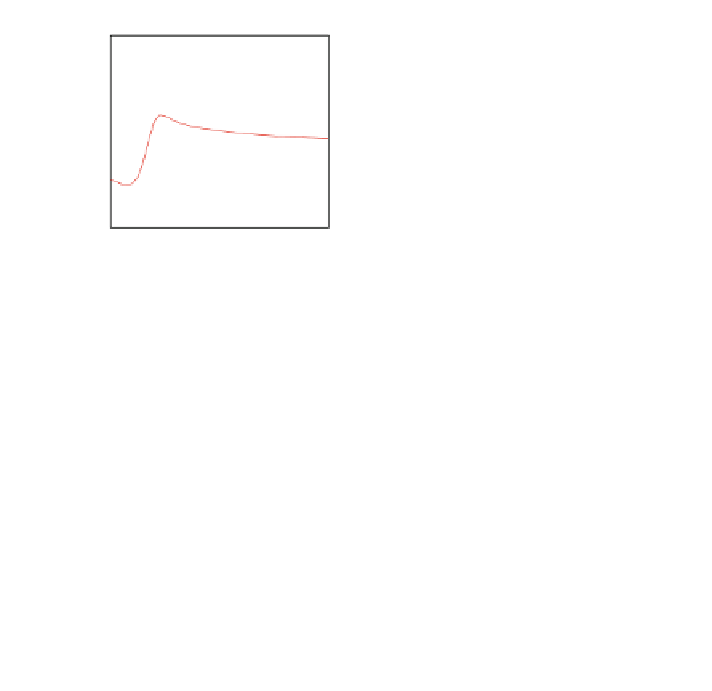Environmental Engineering Reference
In-Depth Information
(a)
(b)
1.3
1.2
1.2
1.1
1.1
1
vertical
oblique
1
0.9
vertical
oblique
0.9
0.8
0.8
400
500
600
700
800
400
500
600
700
800
Wavelength (nm)
Wavelength (nm)
(c)
(d)
1.3
1.4
1.1
1.2
0.9
1
0.8
0.7
vertical
oblique
vertical
oblique
0.5
0.6
400
500
600
700
800
400
500
600
700
800
Wavelength (nm)
Wavelength (nm)
Fig. 7.7 The spectral enhancement factors of the OSC with NSPs are embedded into the spacer.
The angular responses of the OSC for the vertical
ð
0
Þ
and oblique
ð
60
Þ
incidences are also
shown: a separated small NSPs; b close-packed small NSPs; c separated large NSPs; d close-
packed large NSPs. 2011 AIP; Ref. [
30
]
It should be noticed that since the thickness of the active layer is thinner than one
half of wavelength, near-field (not far field) physics plays a key role in the optical
design of NSPs incorporated OSCs. Compared to the spectral enhancement factors
for the separated NSPs, a deep dip can be observed for the close-packed ones as
shown in Fig.
7.7
b, d. The dips resulting from the metallic absorption of the NSPs
correlate with the coupling resonance of the NSP chain. The close-packed NSPs,
particularly for the large ones, block the light and absorb a large amount of
sunlight energy. As a result, little energy penetrates into the active material. Due to
the R
3
decay of electric near-field and the reflection by the interface between the
spacer and active layer, the absorption enhancement is very small when NSPs are
embedded into the spacer. Comparing Fig.
7.7
d to Fig.
7.7
b, the large close-
packed NSPs with large scattering cross-section have more significant enhance-
ment away from resonance but induce deeper dips near the resonance. Weighting
the two effects, the large close-packed NSPs have smaller total enhancement factor
as listed in Table
7.1
.













































































































Search WWH ::

Custom Search